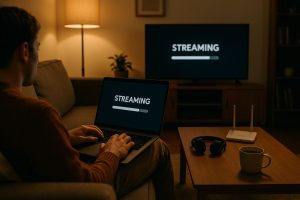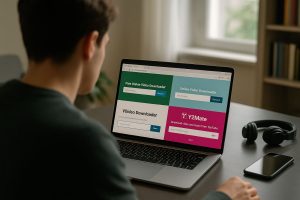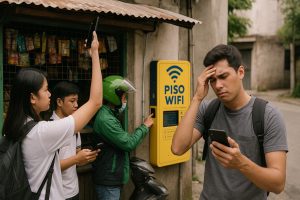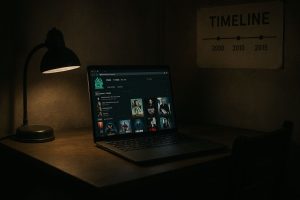Tracking an iPhone Using a Number
Losing your iPhone or having it stolen can be a stressful experience. Many people wonder if they can track their device using just the phone number. While phone numbers alone have limitations for tracking, there are several effective methods to locate your iPhone when it goes missing.
Understanding iPhone Tracking Options
You cannot directly track an iPhone using only its phone number. Phone numbers aren’t tied to physical locations in real-time. However, Apple provides built-in tools like Find My iPhone that use the device’s internet connection and GPS to show its location.
This guide will explain what actually works for finding a lost iPhone, how to use Apple’s tracking features, and what to do if your device is missing. You’ll learn about the most reliable methods and what information you really need to locate your phone.
How Find My iPhone Works
Apple’s Find My service is the most effective way to track your iPhone. This feature uses the device’s GPS, Wi-Fi, and cellular data to pinpoint its location on a map. For it to work, the service must be enabled before your phone goes missing.
To use Find My iPhone, you’ll need to access iCloud.com from another device or use the Find My app on another Apple product. Sign in with your Apple ID, and you can see your iPhone’s last known location if it’s online. The service also lets you play a sound, lock the device, or erase it remotely.
What Information You Actually Need
Contrary to popular belief, you don’t track an iPhone with just the phone number. You need either:
- Your Apple ID credentials to access Find My iPhone
- The device’s IMEI number for carrier assistance
- Access to your cellular account if working with your provider
Your phone number alone doesn’t provide enough information for tracking. Scams often claim to track devices by number, but these are typically fraudulent attempts to obtain personal information.
Using Cellular Provider Assistance
While you can’t track directly with a number, your cellular provider may help locate your device. Carriers keep logs of which cell towers your phone connects to, which can provide approximate location data. This requires contacting customer service and may involve law enforcement for stolen devices.
Providers can sometimes use the IMEI number – a unique identifier for your phone – to track it across networks. You can find your IMEI in your phone’s settings or on the original packaging if you have it.
Third-Party Tracking Apps
Several legitimate apps offer additional tracking capabilities beyond Apple’s built-in tools. These often require installation before your phone is lost and typically use a combination of GPS, Wi-Fi positioning, and cellular data.
Popular options include family tracking apps that let you share locations with trusted contacts. These can be useful for keeping tabs on family members’ devices, but they need to be set up in advance and require the phone to be powered on.
What to Do When Your iPhone Is Lost
If you can’t find your iPhone, start by using Find My iPhone immediately. If the device is offline, you can put it in Lost Mode, which will lock it and display a contact message when it comes online.
Report the loss to your cellular provider to suspend service and prevent unauthorized use. For stolen devices, file a police report as this may be required for insurance claims or carrier assistance.
Privacy and Legal Considerations
Tracking someone else’s iPhone without their consent violates privacy laws in most areas. The methods discussed here are intended only for locating your own devices or those of family members who have given permission.
Apple has built-in protections that prevent unauthorized tracking, including alerts when an unknown AirTag or device is moving with you. These security features help maintain user privacy while allowing legitimate tracking for device owners.
Improving Your Chances of Recovery
There are steps you can take now to make tracking easier if your iPhone is lost later. Enable Find My iPhone in your settings and make sure Location Services are turned on. Keep your Apple ID secure and don’t share your password.
Consider using a passcode or Face ID to prevent unauthorized access. Recording your device’s IMEI number and keeping it in a safe place can also help if you need to work with your carrier or law enforcement later.
Common Tracking Myths Debunked
Many websites claim to track phones using just a number, but these are typically scams. Legitimate tracking requires either Apple’s services, a pre-installed app, or carrier assistance with proper authorization.
Beware of services that ask for payment or personal information to track a phone number. Apple and cellular providers don’t charge for basic tracking services tied to your own devices.
When Tracking Isn’t Possible
If your iPhone is powered off, in airplane mode, or has a dead battery, tracking becomes much harder. Find My iPhone can show the last known location before the device went offline, but won’t provide real-time updates until it reconnects.
In these cases, your best option is to check locations where you last used the phone and wait for it to come back online. Marking it as lost through Find My will activate tracking as soon as it connects to a network.
Alternative Identification Methods
For devices that can’t be tracked, having identifying information can help with recovery. Note your iPhone’s serial number, which can be found in Settings or on your original receipt. Distinctive cases or markings can also help identify your device if found by someone else.
Taking photos of your device and recording its unique characteristics creates additional proof of ownership that may be useful if you need to claim it from lost and found or law enforcement.
Protecting Your Data
If recovery seems unlikely, remote wiping through Find My iPhone can protect your personal information. This erases all data once the phone connects to the internet, though it also removes your ability to track the device afterward.
Before resorting to this, consider whether you have recent backups and whether the data on your phone is more valuable than the chance of physical recovery. For many, preserving personal information takes priority over getting the hardware back.
Staying Prepared
The best approach to iPhone tracking is preparation. Familiarize yourself with Find My iPhone features before you need them. Test the service occasionally to ensure it’s working properly with your device.
Having a plan for potential loss reduces stress if it actually happens. Know which steps to take in what order, and keep necessary account information accessible through means other than your iPhone itself.
Realistic Expectations for Recovery
While Apple’s tracking tools are powerful, they’re not infallible. Professional thieves often power off devices immediately or remove SIM cards to prevent tracking. In these cases, the focus should shift to protecting accounts and personal data rather than physical recovery.
For honest people who find lost phones, the contact information displayed through Lost Mode provides the best chance of return. This makes setting up Medical ID and emergency contacts valuable even when not thinking about device loss.
Making Tracking Work for You
Understanding what iPhone tracking can and can’t do helps set proper expectations. While you can’t track a device with just a number, Apple’s ecosystem provides robust tools when properly configured.
Taking time to set up these features before they’re needed gives you the best chance of recovering a lost device while protecting your personal information from falling into the wrong hands.






